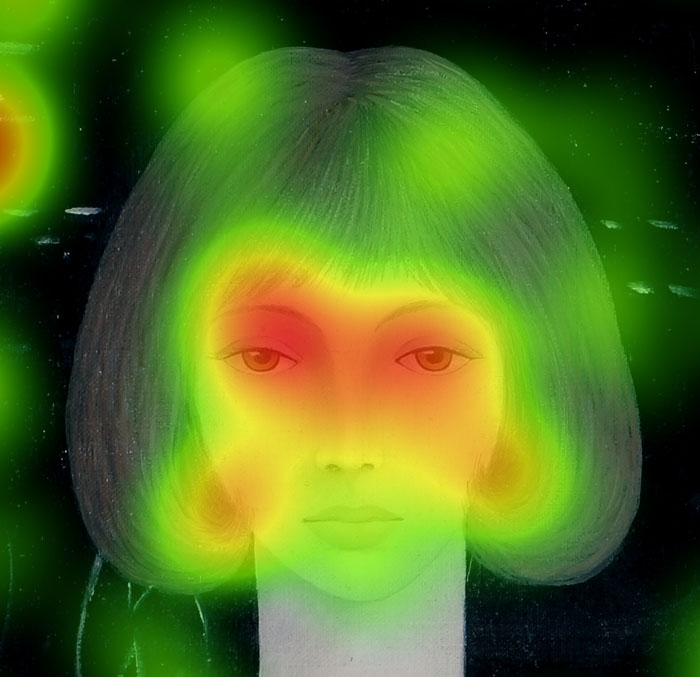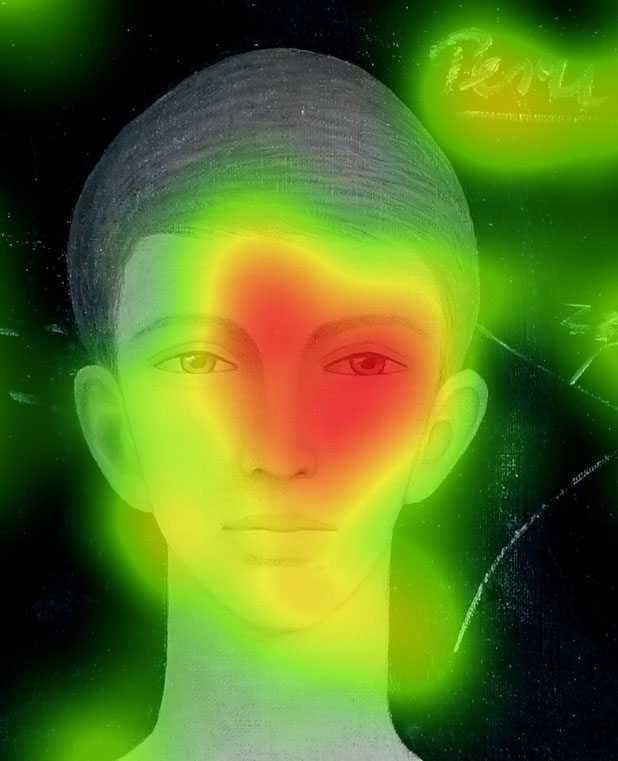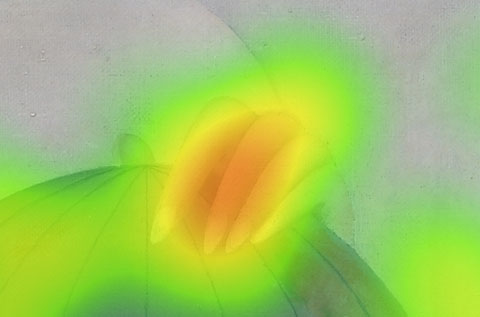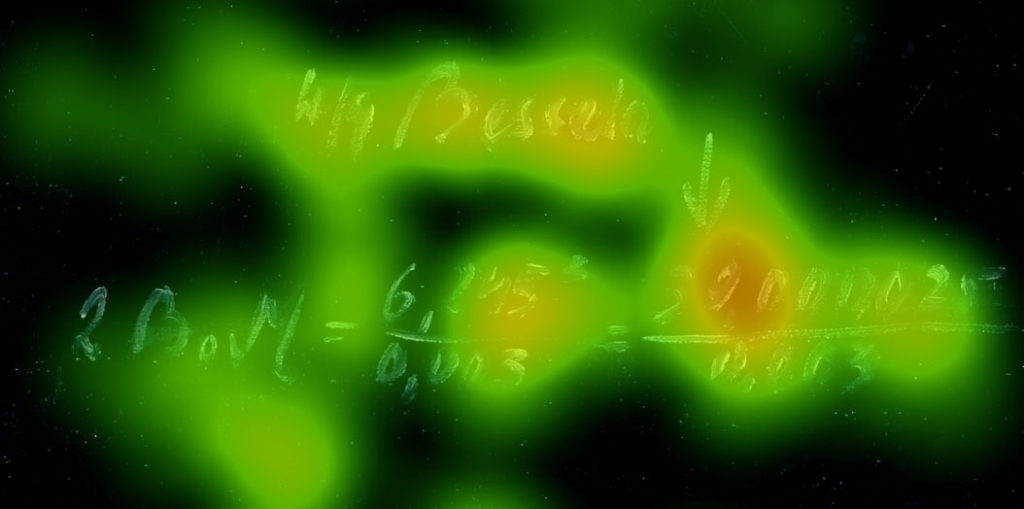
1962, oil on canvas, 100 cm x 75 cm,
average looking time: 20,87 sec.
What do you, men, find attractive in this? Is a naked woman more interesting than any other object seen in its naked and raw form – like an apple, for instance?
D. Potocka to E. Delacroix
Anna Güntner is a slightly forgotten Polish painter. Despite this, her works can be found in various Polish museums and foreign institutions (e.g. in the USA, Switzerland, Germany, Italy, Belgium). She was born in 1933 in Poznań, died in 2013 in Kraków. She graduated from the Academy of Fine Arts in Kraków, where she studied painting under the direction of Zbigniew Pronaszko. As a young artist, she improved her skills in Paris and New York. The peak of her career was in the 60s and 70s, when she mastered to perfection creating works “suspended between a dream about other worlds and a little perverse eroticism”. Güntner’s paintings were full of fatasy and magic, impossible to relate in any way with the surrounding communism reality. The artist worked continuously until 1985 when, for some reason, she abandoned her occupation and never returned to painting.
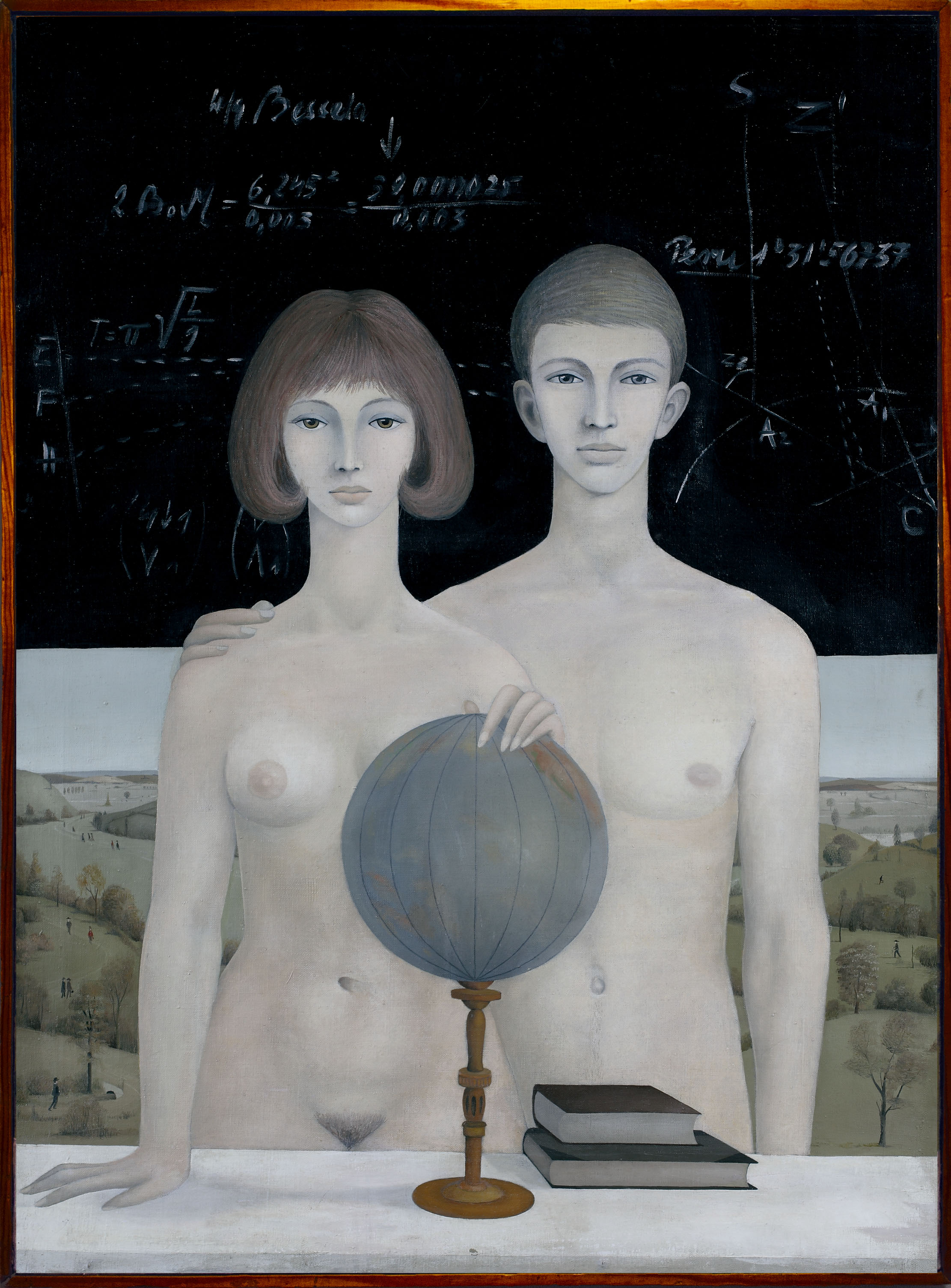
Güntner’s paintings are said to be “first – beautiful, second – mysterious, and third – disturbing”. In her works, the artist tried to stay as far away from socialist realism and mediocrity, as possible. She achieved this goal by perfectly made fantasies, combining formal beauty of Reneissance figures and landscapes with a dreamlike character. In “High School Graduates” we can find Güntner’s characteristics – beautiful, young, immortal bodies, lyrical mood and specific feeling of distance between the characters presented in her pictures. In the background, we can see an early Reneissance staffage symbolising nature, and a series of mathematical formulas referring to science.
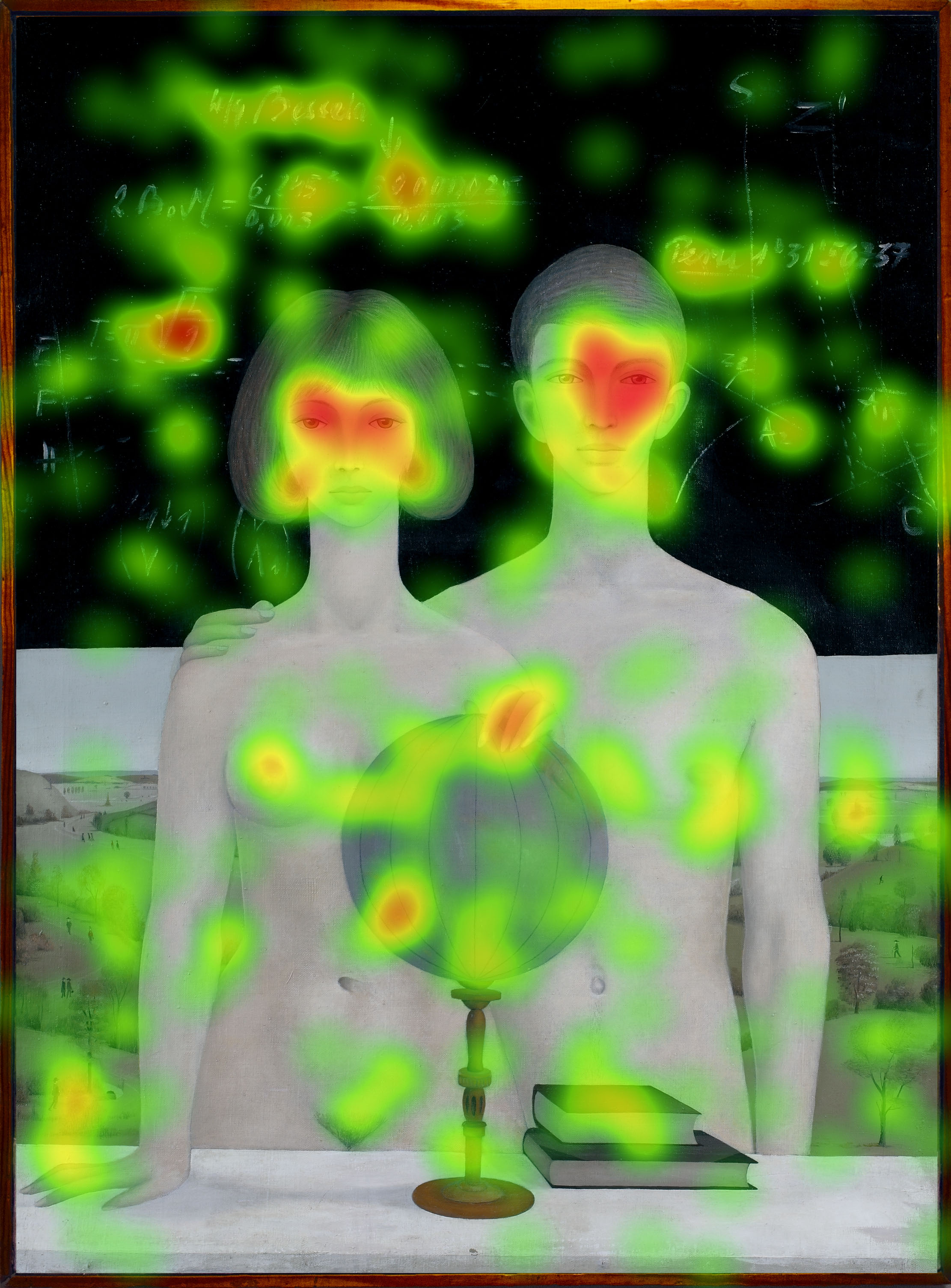

The high school graduates’ faces are perfect in their proportions . They seem to present emotionless, universal physiognomic types of young people. Their palms are of similar nature – they are slender and delicate, both in the case of man and woman. What also attracts attention are the difficult to define mathematic formulas located on a dark, board-like surface. Below that part, there’s also a landscape stylised as a typical early Reneissance imagery, full of movement and tiny characters. In the background we can clearly distinguish some attributes of science and adulthood “achievements”, that is – a globe and books.
Each of us looks at the picture in a different way!

Previous
Zbigniew Makowski “Still Life”
Site map
- How to use the guide
- Andrzej Wróblewski “Shooting I, Execution”
- Stanisław Borysowski “K. B. Graphic”
- Tadeusz Dominik “Composition”
- Zbigniew Makowski “Still Life”
- Anna A. Güntner “High School Graduates”
- Zdzisław Beksiński “Untitled”
- Tadeusz Kantor “Multipart – An Umbrella”
- Tadeusz Brzozowski “Favours”
- Jonasz Stern “The Moment of Light”
- Łukasz Korolkiewicz “Dwellers of Sodom”
- Interviews
PROJECT REALISED AS PART OF THE KUYAVIAN-POMERANIAN VOIVODSHIP MARSHALL SCHOLARSHIP
content & graphic design: Łukasz Kędziora | art collection photographs: Krzysztof Deczyński | translation and proofreading by Martyna Kowalska
